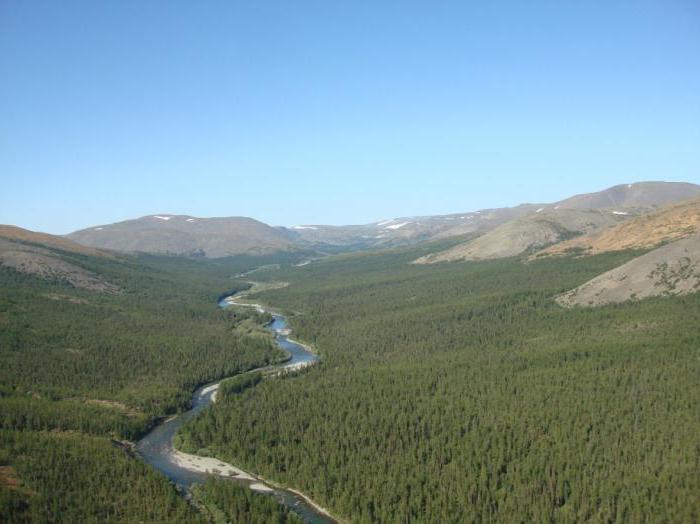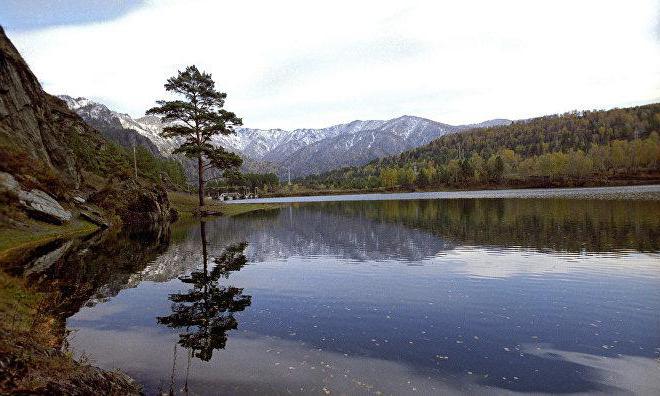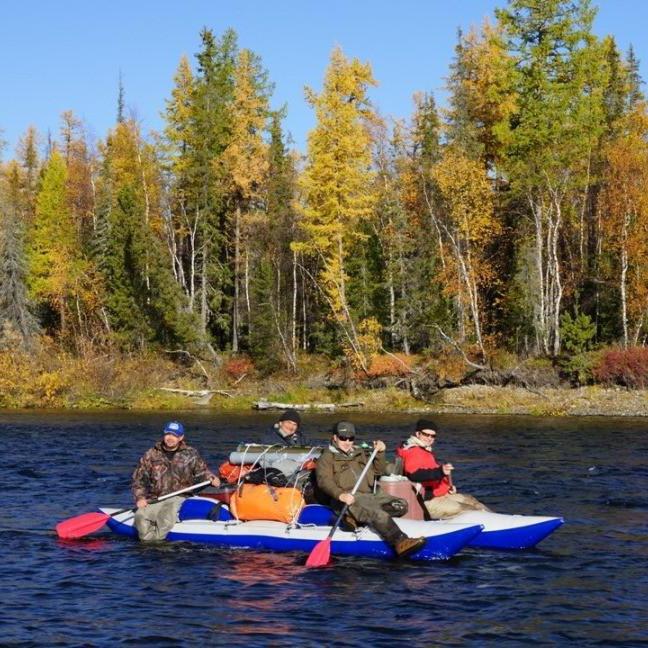The northernmost part of the low, but picturesque Ural mountains in the north of Eurasia is called the Polar Urals. The natural territory immediately belongs to two regions of Russia - the Yamalo-Nenets Autonomous Okrug and the Republic of Komi. The harsh climate and the northern beauty of the landscapes make this place unique. It is along this line that the conditional border between Asia and Europe passes .
General characteristics of the area
The border between the cardinal points, which is considered unofficial, runs exactly between the two regions of the country indicated above, right along the watershed of the ridge that separates the Pechora basin in the west from the Ob in the east. The mountain peaks in the bulk are located at an altitude of 800-1200 m, some slightly higher, for example, Payer Mountain - 1500 m.
In the northern part of the Polar Urals, there is a characteristic feature of the relief. The deep division of the massifs and ridges by transverse, through valleys is adjacent to a small height of passes (200-250 m) through the main watershed. In one of these places, the current branch of the Transpolar Railway stretches.
Relief features
The region of the Polar Urals, like all the Ural Mountains, was formed in the era of Hercynian folding more than 250 million years ago. Since that time, the area has been quietly based on the stable foundation of the Eurasian Plate and has never experienced significant uplifts.
The prolonged effect of erosion, including glaciers, determined what the relief of the Northern Urals, the Urals, and the entire mountain range of the same name now has. It is characterized by wide and deep valleys with typical structures: trogs, punches. There are a lot of basins, mainly of thermokarst origin, some of which were filled with water and turned into lakes.
The Polar Urals are characterized by the separation of the Sob river valley into two parts, which differ in geological structure. In the northern part, the mountainous region reaches a width of up to 125 km, it is strongly dissected by transverse valleys and has a small height of passes - 200-250 m above sea level. But the western slope is steeper. To the south it narrows to only 25-30 km wide with passes up to 500 m, and in some cases up to 1500 m.
The climate of the region
As you know, the Polar, Subpolar Urals are distinguished by severe climatic conditions. The climate in quiet places is sharply continental. The region of the Polar Urals is located on the border of the interaction of European cyclonic activity and the Siberian anticyclone. Winters are very cold (up to -55 ° C), with strong winds and high rainfall. Due to the fact that moist cyclones go to the mountains from the west, in the eastern part there is 2-3 times less rainfall. Autumn, spring and summer are short and the weather is unstable at this time. Heat with a mark of + 30 ° C can change dramatically on cold days with heavy rain, strong gusts of wind and hail.
Rivers of the Polar Urals
As mentioned above, a watershed passes through the territory of the Polar Urals. This term should be understood as a conditional topographic line on the surface of the Earth, which separates the basins of two or more oceans, seas, rivers and lakes. Precipitation is then directed along the drains from two opposite slopes. In this case, the watershed passes between the basins of the Ob and Pechora (Usa) rivers. The western slopes due to the amount of precipitation, 2-3 times greater than on the eastern slopes, are densely dotted with river valleys.

From north to south flow Kara, Elets and Usa. The length of the first is 257 km, and the basin area is 13.4 thousand square kilometers. Food is provided mainly by snows and rain. The Polar Urals includes the largest tributary of the Pechora - the Usa River, whose length is 565 km, and the navigable area of the basin is 93.6 thousand square meters. km In some sections, the river is fleeting, with rapids, which attracts many tourists for rafting.
Three rivers pass through the eastern slope of the mountains. Son (217 m long) is the left tributary of the Ob. The river is partially navigable, along the banks there are several small settlements. The second water artery, Shchuchye, has a length of more than 500 km and is a spawning ground in which whitefish, chira, and vendace swim. The third river, Longyotang, has a length of 200 km.
Lakes in the northern part of the region
The area is rich in clean and cold northern lakes. Most of them are of thermokarst origin and are concentrated in the Karov valleys. The first factor determines the small size and their shallow depth. In the northern part there is a system of Hadata-Yugan-Lor reservoirs, which consists of Small and Big Lakes, interconnected by a kilometer jumper 20-50 meters wide. The most beautiful places that the Polar Urals are rich in have recently been protected, and the territory is included in a biological reserve, in which bison acclimatization and musk ox acclimatization are carried out.

In the northern region there is also Small and Big Shchuchye Lake. The latter is located in a tectonic depression and, by the standards of the entire Urals, has an outstanding depth of 136 m and the largest water surface area. From a bird's eye view it looks like a spacious river, a little over a kilometer wide. Peaks up to 1000 m rise around the lake along the shores. The rocky slopes of the ranges descend directly to the lake, sometimes turning into steep cliffs. Great depth begins only 50 m from the coast.
An incredible sight, picturesque places - this is what is worth visiting the harsh Polar Urals. The campaign can be organized independently, but it is best to use the services of an accompanying person. For recreation, the northern and southern sides of the lake are suitable with flat and even shores, covered with grass and shrubs. The water temperature does not rise above 10-14 ° C even on the hottest days. The lakes themselves and the surrounding area belong to the state reserve.
Mountain peaks
- Konstantinov stone is a mountain massif composed mainly of sandstone and quartzite 45 km from the Baydarata Bay of the Kara Sea. The highest point at 483 m from the sea.
- Kharnaurdy-Keu is a mountain (1246 m); it does not have permanent glaciation.
- Ngatenape - a mountain peak (1338 m).
- Hanmei - 1333 m above sea level.
- Payer is the highest peak of the Polar Urals (1499 m), consisting of shales, quartzite and igneous rocks, with snowfields.
Fauna and flora
The nature of the Polar Urals is beautiful, but not as rich in species as warmer climatic zones. The vegetation is rather sparse, and taiga forests can be found only in the southern part of the region. In the Urals, birch and fir are found; in the Urals, spruce and larch. In the river valleys you can see dead wood, rare deciduous forests. Shrubs, willows, dwarf birches, grasses and flowers grow along the banks of water bodies. Common northern berries: lingonberries, cloudberries, blueberries and mushrooms.
The fauna is poor. Often, of all the large animals in these parts, only reindeer can be found. Wild almost exterminated. Most of the livestock are domesticated animals that are the property of the local population. They knock pastures due to overgrazing. Once upon a time, musk oxen, wild horses, bison, saigas felt at ease in these territories. At the moment, a small number of brown bears has been preserved, there are hares and partridges.
In general, vegetation and wildlife are characteristic of the tundra zone. The altitudinal zonality of the Polar Urals is clearly expressed, that is, a change in landscapes and environmental conditions is associated with a decrease in air temperature and an increase in precipitation.
Industrial development of the region
The entire Urals is the oldest mining region of the country. In its bowels there is an impressive amount of a wide variety of minerals, including iron, copper, platinum, gold, precious stones, potassium salts, asbestos and much more. The reason for this diversity is a special geological history.
The placement of minerals is also subject to the principle of altitudinal zonation. In 2005, the development of the Ural Industrial-Ural Polar project began, which aims to achieve economic affordability and the feasibility of involving the region’s richest raw materials in the region’s industrial production. Among the projects is the extraction of polar quartz.
Tourism in the region
The harsh climate and nature contribute to the fact that the Polar Urals, and especially its southern part, are widely popularized among tourists, fans of skiing, hiking and water sports. One of the important advantages of the district is its accessibility from the point of view of transport, as well as the maximum distance of routes from the railway stations "Severnaya", "Ural", "Khorota", "Yelets" and so on, no more than 60 kilometers. In the tourist environment, the popular rivers are Voikar, Sob, Kara, Son, Pike, Tanya. Depending on your capabilities and preparation, you can choose routes of varying difficulty - from the first to the fourth category.

In addition, the Polar Ural has several ski resorts of its own, in particular in the village of Polyarny, at the Sob station and on Mount Chernaya. Hiking and skiing trails in the northern part of the region, with visits to impressive mountain lakes, are especially popular. However, a specific climate, characterized by its severity, makes its own adjustments. So, in connection with a short day and harsh winters, ski trips are carried out in April-May. Hiking trails in the mountains are possible from July and continue until mid-August, since at this time the most comfortable warm weather is established.